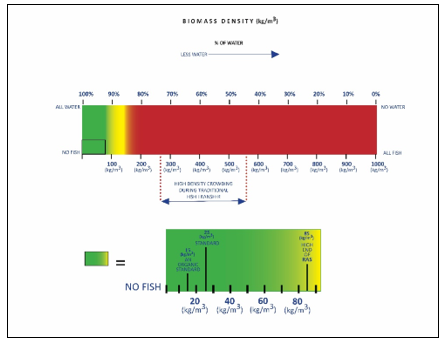"PUMP FISH WITHOUT CROWDING" – TRANSFER FISH AT A HIGH RATE WHILE MAINTAINING LOW BIOMASS DENSITY
Fish transfer worldwide is accomplished by bringing fish into a high-density situation before they can be sucked into a pump – and the more you crowd the fish, the better the transfer rate. This relationship is unsatisfactory because high density crowding is unhealthy for any population of fish. It creates stress, affects fish health and survivability and delays feeding post transfer.
During the farming process, we maintain biomass density (how much fish per unit volume of water) at a very low rate so there’s lots of water and not too many fish. There are very specific thresholds to maintain to keep the fish happy and healthy. The only time that we bring biomass density into an unsafe zone, one that is not sustainable and will eventually cause a negative outcome for the fish, is during fish transfer. The entire industry needs a solution where one can achieve a good transfer rate and keep the waiting fish population in a low biomass density situation – a safe zone – with lots of water for every animal that is waiting its turn to go through the fish pump.
We have designed a system that works with nature, that works with the fish’s natural behavioural instincts, that invites them to voluntarily participate in the transfer, to swim into the fish suction, instead of away from it.
The Voluntary Swim-In (VSI) technology is about better survivability, better health outcomes, and more feeding days. It will keep your fish happy, during and after the transfer, and help your bottom line.
